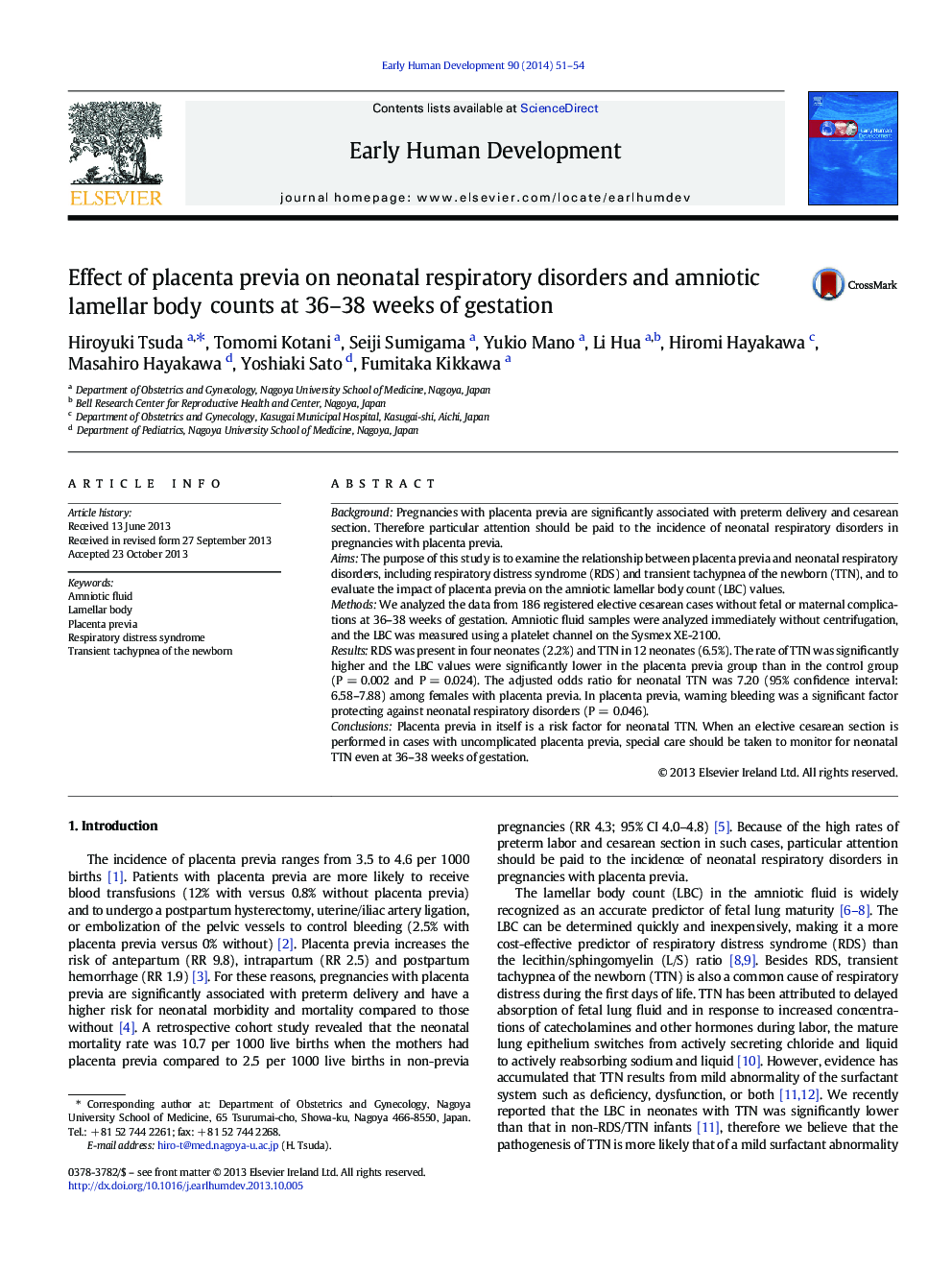| Article ID | Journal | Published Year | Pages | File Type |
|---|---|---|---|---|
| 3918080 | Early Human Development | 2014 | 4 Pages |
BackgroundPregnancies with placenta previa are significantly associated with preterm delivery and cesarean section. Therefore particular attention should be paid to the incidence of neonatal respiratory disorders in pregnancies with placenta previa.AimsThe purpose of this study is to examine the relationship between placenta previa and neonatal respiratory disorders, including respiratory distress syndrome (RDS) and transient tachypnea of the newborn (TTN), and to evaluate the impact of placenta previa on the amniotic lamellar body count (LBC) values.MethodsWe analyzed the data from 186 registered elective cesarean cases without fetal or maternal complications at 36–38 weeks of gestation. Amniotic fluid samples were analyzed immediately without centrifugation, and the LBC was measured using a platelet channel on the Sysmex XE-2100.ResultsRDS was present in four neonates (2.2%) and TTN in 12 neonates (6.5%). The rate of TTN was significantly higher and the LBC values were significantly lower in the placenta previa group than in the control group (P = 0.002 and P = 0.024). The adjusted odds ratio for neonatal TTN was 7.20 (95% confidence interval: 6.58–7.88) among females with placenta previa. In placenta previa, warning bleeding was a significant factor protecting against neonatal respiratory disorders (P = 0.046).ConclusionsPlacenta previa in itself is a risk factor for neonatal TTN. When an elective cesarean section is performed in cases with uncomplicated placenta previa, special care should be taken to monitor for neonatal TTN even at 36–38 weeks of gestation.
